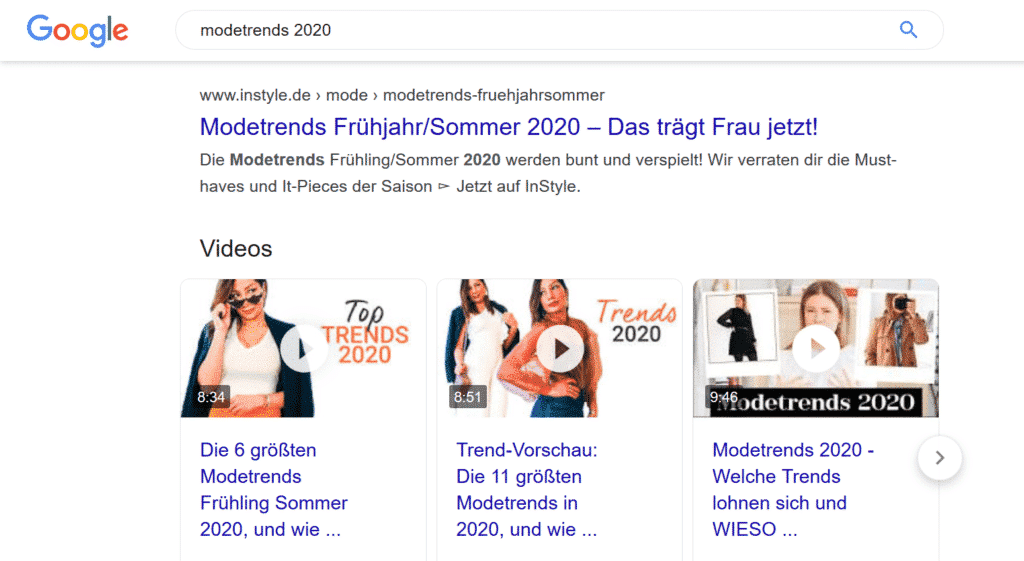Today we’re asking whether multilingual video helps SEO performance. Video content has exploded in the past decade and is now central to most marketing strategies. But how does video, and specifically multilingual video, relate to your SEO strategy?
Ian:Video has obviously become very important in engaging with customers, but how does video help SEO?
Tim:This is a fast-changing area. Not long ago video didn’t really help with SEO because SEO was all about written content. Even a few years ago Google didn’t understand what was being said in videos, so apart from written titles and other metadata, video content didn’t really help SEO.
What’s different now is that Google and YouTube automatically transcribe and index video content. YouTube have recently announced that they’re indexing all video content to allow you to create automated subtitles. This is a further stage in the digitisation of video content. Transcribed video content makes it easy for Google to rapidly find content which is relevant to your search term.
Ian:Given the dominance of video, the answer to my next question seems to be quite obvious – does multilingual video help SEO performance?
Tim:Transcribed, translated and subtitled video helps your SEO performance in every language. What starts as a monolingual video becomes multilingual video which drives SEO performance in each of your target markets. This could give you a further advantage if you have translated video content because so often your competition hasn’t translated theirs. When the user types in a search term it’s very likely that Google will want to show them a range of types of content. Looking at a search engine results page you’ll sometimes see a long list of web page results, and sometimes a horizontal listing of images. You may also see a number of video search results in a different section of a Google page, and if you’re the one that has video content translated into German it’s much more likely that you’ll leapfrog your competition and grab the attention of the German consumer.

Ian:Should you add subtitles for a video’s original language?
Tim:In most cases the answer is yes; there might be aesthetic reasons why you don’t want to do this but on the whole there are solid reasons for doing so. In the case of YouTube, while they’re now transcribing your video’s content that process isn’t perfect. If a video includes indistinct speech or people speaking with regional accents or using jargon it’s likely that errors will show up in the transcription.
By adding your own transcription you’re ensuring that it’s correct and you can also make sure that keywords you’re targeting are being hit in the subtitles. Automatic transcription services like Simon Says make this so much easier, and although you still need to check the results it’s a big shortcut. We can also do this for you if you don’t have the resources available internally, and it doesn’t cost too much.
Another reason to add subtitles is that if a video is showing up in the river of news on Facebook or LinkedIn the video will be muted in the news feed. There needs to be something visible which helps the user see what the video is about, and subtitles fill that gap when a video is muted.
Yet another reason to do it is for viewers who are watching video in an environment like an office, who want to see what the video is about but don’t want the audio playing in such a public environment.
Ian:What else can you do to make sure multilingual video helps SEO?
Tim:Outside of the translate/transcribe/subtitle process there are the usual SEO best practices for this to ensure your video is found. On your web page where you’re hosting the video you need to include localised keywords and meta-descriptions; you should include a translated description too. All this helps your multilingual video to be found by your target audience. You should add a video site map if you don’t already have one, this will help Google find your video content. A lot of websites don’t have a video sitemap but it’s easy to add.
Ian:Where should you host video content?
Tim:The general advice is that you should host videos on your own web site. The reason for this is that if you only post them on YouTube you’re driving your customer into YouTube. Once the customer is in YouTube, YouTube wants to keep them there watching the next video (probably not yours) that’s related to the search term. If however the video is on your website you’ve got a better chance to encourage your customer to take the next step: place an order, subscribe, or whatever it is you’re chasing. So although hosting your own videos is a bit more work, there’s a big commercial benefit.
If you are going to host your videos on your website you need to get it right. The customer has an expectation about the performance of a video so it has to play immediately, which means focusing on things like content delivery networks, which we’ve mentioned before. Video quality is obviously an important consideration (is it 4K?), as is responsiveness and awareness of which devices your videos will be watched on.
The key takeaway here: if someone’s searching on Google you want them to see your website first and not YouTube.
While it’s advised that you host your own videos, it’s a missed opportunity if you ONLY publish them on your own site. It makes no sense to NOT have them on YouTube as well. Iif you have a customer who is in YouTube searching for your product or service you want your offerings to be there as well. It’s not either/or, do both.
It’s essential that when posting on YouTube you include a link to your website. Although people might find your product or service on YouTube, make sure they have an easy route back to your website. You need to think about video titles in addition to subtitles, and a good description is another part of making sure you give your videos the best possible chance of being found by the consumer wherever they happen to be.
The key takeaway here: if someone’s searching on Google you want them to see your website first and not YouTube.
Ian:Any other video tips Tim?
Tim:This doesn’t relate to translations specifically but there’s strong evidence that interaction with video falls off a cliff when videos run beyond 2 minutes. There are exceptions of course and there are plenty of YouTube channels now that are effectively an alternative to watching regular TV programmes, but it’s important that commercial videos that are pushing products and services are kept short. Some platforms like Instagram have time restrictions, and knowing how people interact with video on Twitter it’s obvious that you need to keep your videos on there to 30 seconds or less.
We created a launch video for our translation subscriptions launch which is about fifty seconds but it started 30 seconds longer than this. It didn’t take too much effort to bring it down below a minute, and that means it’s more likely people will view it to the end. Shorter videos mean fewer words so of course they’re cheaper to translate, which is even more of an incentive to get your videos translated and subtitled!
Imagine that the experience of your audience is that you’re the only video that they see in their rivers of news. It’s important to keep that interaction at the forefront of your thinking, so you need to get the graphics content that accompanies any video translated into all your target languages.





